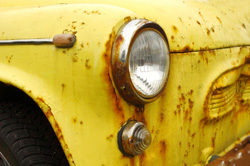Reversing the rust
The EU-funded project 'Numerical modelling / lifetime prediction of delamination polymer coating disbonding and material degradation' (Degradation Modeling) studied ways to counter the corrosion process. The project sought to develop software to predict the specific mechanisms behind corrosion in order to support improved product design and validation. It measured the corrosion rate against various environmental factors and climatic conditions. To illustrate, the project covered theoretical salt spray testing on painted galvanised steel, taking into account wet/dry cycles used in automotive corrosion tests. Degradation Modeling built a database and reviewed information on underfilm corrosion mechanisms, including surface treatment, coating, sealer, topcoat and environmental parameters. The database covered delamination of automotive materials and building materials for hundreds of cases and materials. Moreover, team members simulated models for zinc-polymer systems including geometry of blisters representing industrial corroded samples. They also simulated paint delamination at the cut edge of zinc-coated steel. Degradation Modeling also investigated the relationship between coating thickness and delamination rate. It completed various tests on confined zone corrosion in cyclic corrosion for pure zinc and galvanised steel. Experiments covered mass loss during drying, analysis of corrosion products, pH changes and temperature effects. These tests and models, in addition to many others, gave rise to several conclusions of industrial and scientific importance. Results and knowledge obtained during the project were made available through a website for corrosion databases. They were also published in scientific journals and at international conferences. Thanks to project outcomes, many products and pieces of equipment are likely to last longer and become more efficient, reducing costs and streamlining production.







